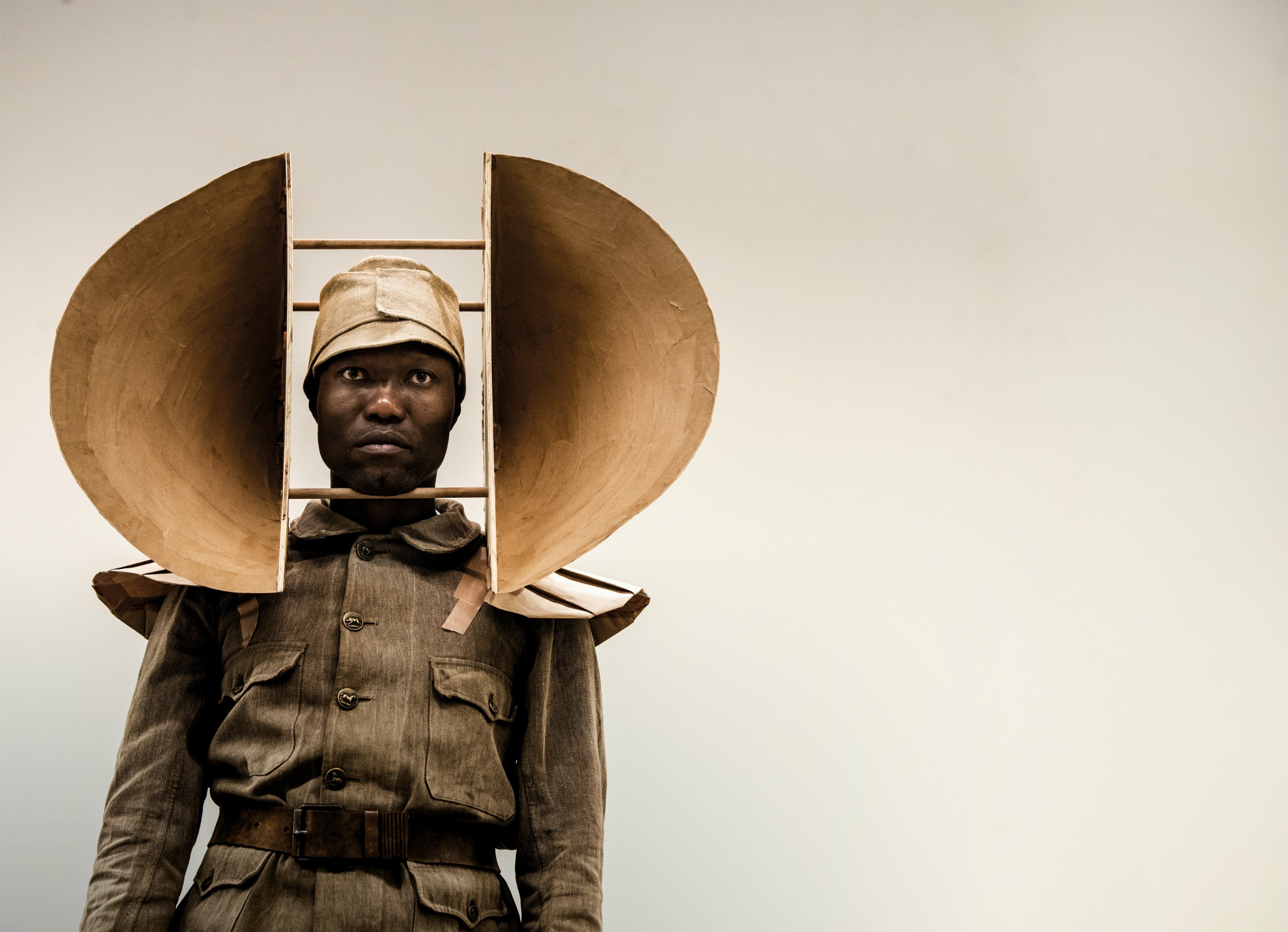
The hundreds of thousands of forgotten Africans who fought and died as soldiers, porters, and laborers in World War I in the armies of their colonial rulers, will be remembered in a spectacular performance created by the South African artist William Kentridge, which will be premiered in London’s Tate Modern in July before traveling to New York and then Germany.
The Head and the Load, which draws inspiration from the Dada artists’ response to the bloodshed, will first be performed by a cast of more than 50 dancers, actors, singers, and musicians in Tate Modern’s vast Turbine Hall (July 11-15, 2018), before touring to New York’s cavernous Park Avenue Armory (December 5-15, 2018). Longstanding collaborator Philip Miller is writing the musical score for the large-scale performance.
William Kentridge, The Head and the Load, copyright the artist, photo by Stella Olivier.
Kentridge tells artnet News that the piece refers to how World War I was a culmination of the Conference of Berlin in 1884-85, dubbed the Scramble for Africa, when European powers carved up the continent. After the conflict “there is a huge re-arrangement of Africa,” Kentridge says. He adds that the work is also due to be performed in Germany as part of the next Ruhrtrienniale.
While the campaign in east Africa is sometimes remembered, albeit as side-shows to the conflict on the Western and other fronts, the impact and human cost of the war across Africa and in African lives “is a history that I myself was unclear about,” he says, stressing that “a million Africans died in Africa.”
The Head and the Load, which is a phrase taken from a Ghanaian saying, refers to the thousands of Africans from almost every country rushed to Europe by Britain, France, and Germany to fight in the front line and in even greater numbers dig trenches behind the lines and transport supplies as laborers and porters, but its main focus are the men who volunteered or were pressed into service in Africa. The colonial politicians’ and generals’ empty promises about civil rights if they served, and the men’s mistreatment, are at the heart of the operatic piece, co-commissioned by 14-18 Now and the Park Avenue Armory.
William Kentridge, Photo: Marc Shoul
Other high-profile commissions announced today in London to commemorate the centenary of the end of World War I through visual art include works by Rachel Whiteread, Rachel Maclean, and John Akomfrah. Whiteread is making Nissen Hut, a sculpture cast from inside the type of prefabricated military buildings devised in the war. It will be unveiled on the site of a prisoner of war camp in the north of England.
Rachel Whiteread, Nissen Hut (Part of the Shy Sculpture Series). Nissen Hut in Dalby Forest, photo by Tamsin Dillon.
Akomfrah, like Kentridge, is remembering the African soldiers who fought. The British artist and filmmaker is creating a multi-screen installation. Peter Jackson, the New Zealand film director of Lord of the Rings fame, who has a longstanding interest in World War I, is making a 3D film based on archival footage of the conflict.
Peter Jackson, film still from The Battle of the Somme restored and colourised by WingNut Films with Peter Jackson. Original copyright IWM (191)
Meanwhile, the Brooklyn-based artist Duke Riley is bringing his flying patrol of pigeons to London to create Fly by Night. Another transatlantic commission, this time co-organized by the New York-based Public Art Fund will see Dazzle Ship New York unveiled, the latest in a series of vessels to be painted by an artist inspired by wartime naval camouflage. Further details are due to be announced.
Gillian Wearing, Millicent Fawcett, reproduced courtesy of the artist, photo copyright GLA/Caroline Teo.
This year, 14-18 Now, which has been commissioning new works to commemorate World War I and its consequences since 2014, is also focusing on the centenary of women (over 30) winning the right to vote in the UK and to be Members of Parliament. At the end of February, Turner prizewinner Gillian Wearing’s statue of the Suffragist campaigner Millicent Fawcett is due to be unveiled in Parliament Square, breaking the site’s male monopoly. Maclean, who represented Scotland in the Venice Biennale last year, has been commissioned to make a film titled Make Me Up, which is a part horror movie, part comedy, including a militant Suffragette’s vandalism of the Rokeby Venus by Velázquez in London’s National Gallery in 1914.